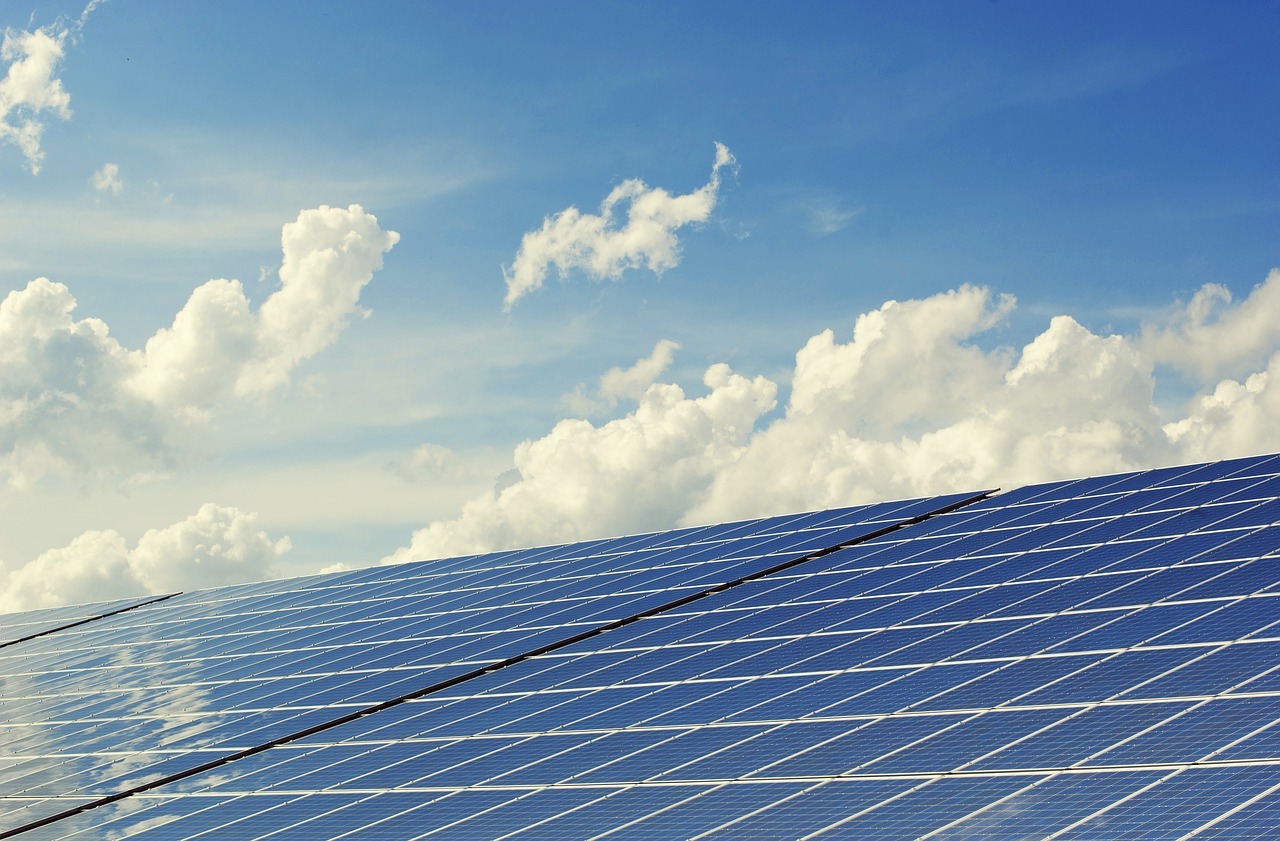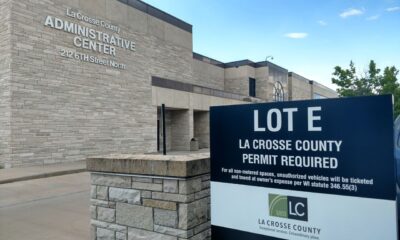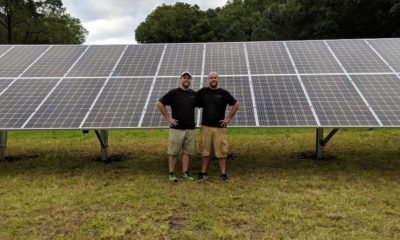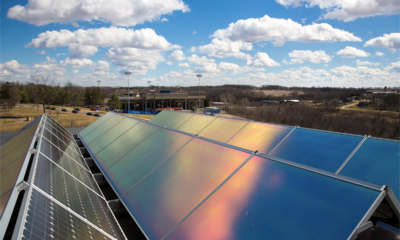Wisconsin
Wisconsin homeowner worried about looming solar development

DARIEN, Wis. (AP) — A tattered American flag waved in Roger Millard’s front lawn amid sprawling Walworth County farmland.
For 28 years, Millard, 67, has lived in the quaint, two-story home off North Road about 3 miles northwest of the village of Darien.
“I wanted to live in the country,” Millard said. “I’m a farm boy.”
Farmland surrounds Millard’s 2-acre property, and the fields have been planted in commodity crops for decades.
But he fears a planned solar farm could surround his home, turning it into an oasis in a “solar desert.”
As markets for commodities soften, more local landowners are considering a different source of income: leasing their fields for solar development.
An owner of the land surrounding Millard’s property said he has signed a lease agreement with Invenergy, a Chicago company eyeing a utility-scale solar development in the area that would be one of the largest in the Midwest, the Janesville Gazette reported.
Invenergy representatives said multiple landowners in the town of Darien in Walworth County and the town of Bradford in Rock County have signed agreements. The project would cover about 1,750 acres and generate up to 250 megawatts of electricity, enough to power tens of thousands of homes.
In April, the state Public Service Commission approved a similar Invenergy solar development in Iowa County, possibly laying the groundwork for large-scale solar developments across Wisconsin.
Millard has raised concerns about the local project. He worries about noise from the solar panels and doesn’t want to see valuable, fertile farmland taken out of production.
Invenergy representatives maintain they would be flexible with nonparticipating landowners, even though Wisconsin has few regulations for utility-scale solar developments and does not require minimum solar panel heights or setbacks.
Bobby Howard, Invenergy project manager for the proposed development, said the company’s engineers will evaluate the land after securing enough leases, consider local input and piece together a layout before submitting their application to the state commission.
“Just because you’re surrounded by a leased area does not mean, by any stretch, you’re going to be surrounded by solar panels,” Howard said.
Howard said Invenergy is in the mid to late planning stage for the local project, but he would not say how much land the company has secured.
He said it’s unknown how many acres Invenergy is seeking. Seven acres generally is needed for each megawatt generated in a solar project, which would be about 1,750 acres for a 250-megawatt development.
“For us, the more land we have under control, the better,” Howard said. ”… It makes the project easier to construct if we have more land.”
There is no target date to finalize leases, Howard said. The arrays likely would sit across non-contiguous parcels like a patchwork quilt, connecting underground through 34.5 kilovolt lines.
Like the Iowa County project, Invenergy might act as the developer, engineer and construction firm on the development, and a utility or another party would own the assets. Howard said Invenergy does not yet have a utility customer for the development.
A substation likely would be built between existing stations — the Rock Energy Cooperative Substation at 4103 S. Odling Road and the West Darien Substation at 2918 Foundry Road — to connect to the grid, Howard said.
Invenergy is doing a study with Midcontinent Independent System Operator — which operates the electrical grid across the middle United States — to determine a viable substation location.
Howard said each megawatt would produce about $4,000 in local tax revenue. Noise from inverters would not exceed 45 decibels — about the amount of noise made by a refrigerator — for people in their homes, Howard said. Inverters change direct current produced by the solar panels into alternating current used by the electrical grid.
“If you’re a homeowner at the edge of the project, you would never hear noise levels in addition to ambient noise,” Howard said. “If the wind is blowing, that probably is going to be louder than the solar project.”
Wisconsin’s cloudy skies and northern latitudes don’t seem conducive for generating solar energy, especially when compared to states with sunny skies and open spaces.
Sanford Klein, emeritus professor of mechanical engineering at UW-Madison, wrote in an email to The Gazette that solar developments in Wisconsin are at a disadvantage in the winter and that the state’s low solar resources reduce the economic allure of building solar projects here.
But solar panel prices have dropped dramatically in recent years, Howard said, making utility-scale solar developments in northern states financially feasible.
Douglas Reindl, an engineering professor at UW-Madison, said emerging solar developments are in part being driven by recent legislation in Wisconsin that establishes a goal for all new electric generation to “be based on renewable energy resources, including hydroelectric, wood, wind, solar, refuse, agricultural and biomass energy resources.”
In a 2010 study, Klein and Reindl wrote that the number of small-scale solar installations was rising rapidly in Wisconsin in part because of burgeoning federal and state subsidies for solar panel installation and utility subsidies for solar generation.
Despite the shortcomings of Wisconsin’s climate, Invenergy is poised to make long-term investments in Wisconsin solar energy. Along with the Badger Hollow project in Iowa County, the company is working on another 300 megawatt, utility-scale solar development proposal in Kenosha County.
“We think (solar) is going to be the most competitive, cheapest source of generation, and local utilities have expressed a need for low-cost renewable generation,” Howard said. “We think this is a good fit for that.”
Wisconsin statutes define large electric generating facilities as those producing 100 megawatts or more. That is why the state Public Service Commission, a three-member board, has jurisdiction over solar developments exceeding 100 megawatts.
Matt Dannenberg, a spokesman for the commission, wrote in an email to The Gazette that zoning and land use in a project’s proposed area will be evaluated during the commission’s review process. There are no conditional requirements or state restrictions for solar panel height and sound, Dannenberg wrote.
Once a proposal is submitted and deemed complete, the commission will begin an environmental review that will include public meetings in the area. Letters summarizing the environmental assessment’s results then will be sent to potentially affected landowners.
A local hearing for members of the public will be scheduled, and organizations may participate in the commission’s “quasi-judicial hearing process” as intervenors, which will allow them to file testimony and provide feedback.
On rare occasions, members of the public may participate as intervenors, Dannenberg wrote, though it’s generally “more appropriate for members of the public to participate through the commission’s public comment processes.”
Commission staff will compile and organize records, including comments from members of the public, and the commission then will review records and make a decision no later than 360 days after the application is complete, Dannenberg wrote.
Millard bought the 2-acre property off North Road in 1991. The home was run down and dirty. He eventually gutted a portion of it and sliced off the old kitchen.
Now, the home has open living rooms, and windows provide views of sweeping farmland in every direction.
Millard worries he’ll be encircled by solar panels if the project comes to fruition, and he fears his property’s assessed value will sink.
His wife, Dawn Millard, already has viewed other properties in the area in case the couple decides to move, but Roger fears they could have a hard time selling if a solar development is looming.
A mile west of Millard, Judy Gause has land between two parcels owned by Dean Kincaid, Inc. — the same corporation that owns the land around Millard’s property. Her husband, Lowell, grows hay, beans and corn and has beef cattle.
“My grandfather bought that farm in 1919. October,” Gause said. “My parents put it in the land preservation because they value the farmland . . . I respect their wishes.”
Gause is opposed to the solar development, largely because she wants to preserve the fertile farmland. Like most locals, Gause believes the dirt in the area is among the most nutritious on the planet.
“There are farmers in the state of Wisconsin, they would give their first-born child to have this dirt,” Millard said. ”… I’m not against green, but this is not the place to put it … It’s agriculture land.”
Howard pointed to what he called “land use benefits” of the solar development. He said the Invenergy would shift the kind of agriculture on the land to “farming the sun,” planting native grasses and plant species to promote pollinators.
“It’s a different type of agriculture,” Howard said. “But I think it’s really a way to have a positive impact with the acres that you’re using.”







